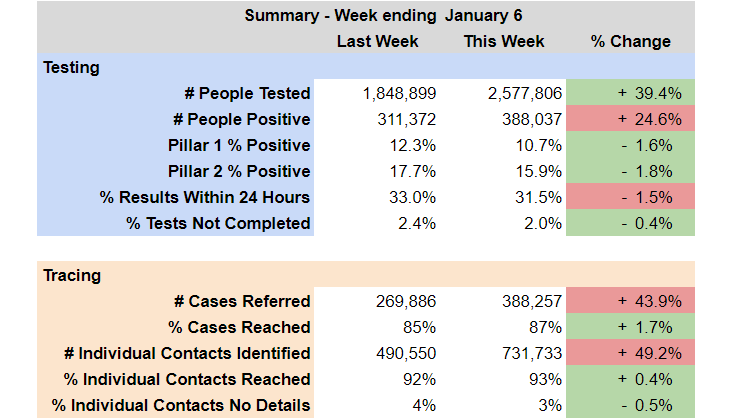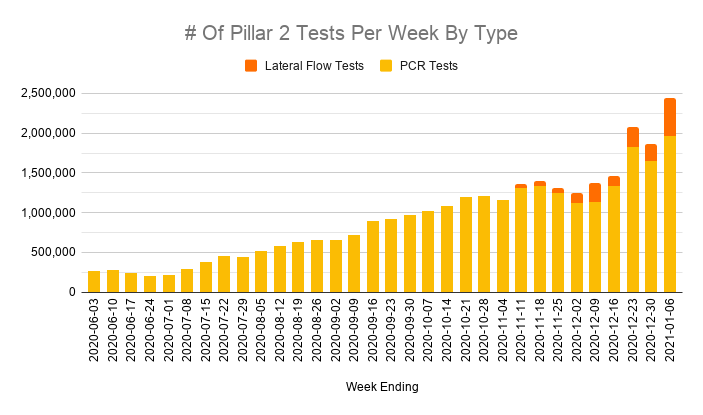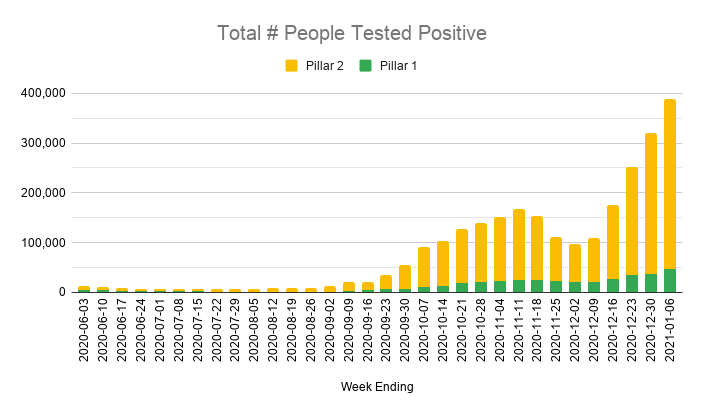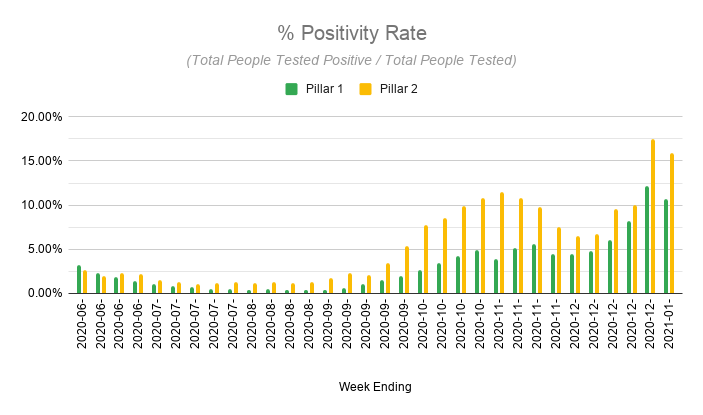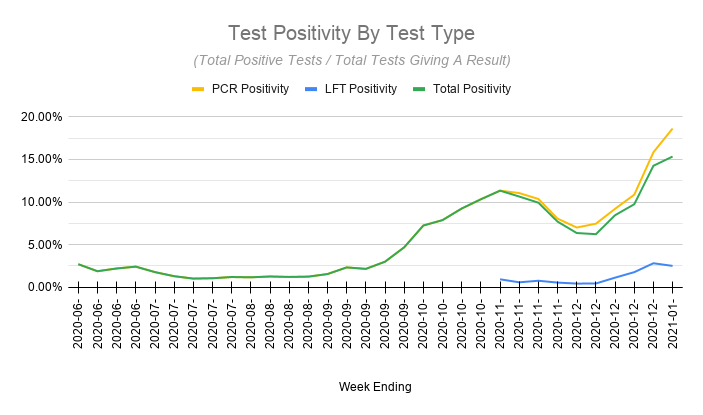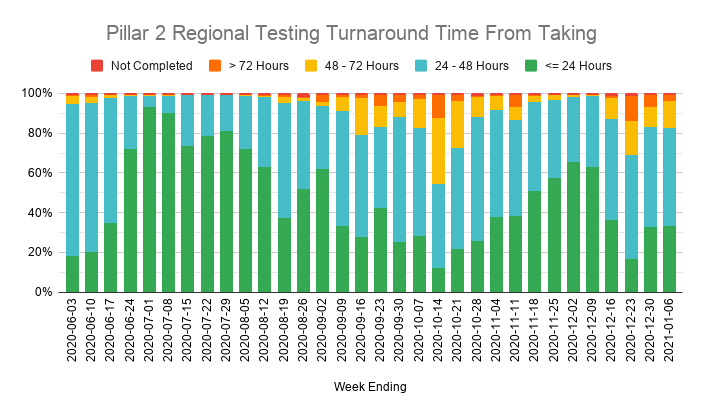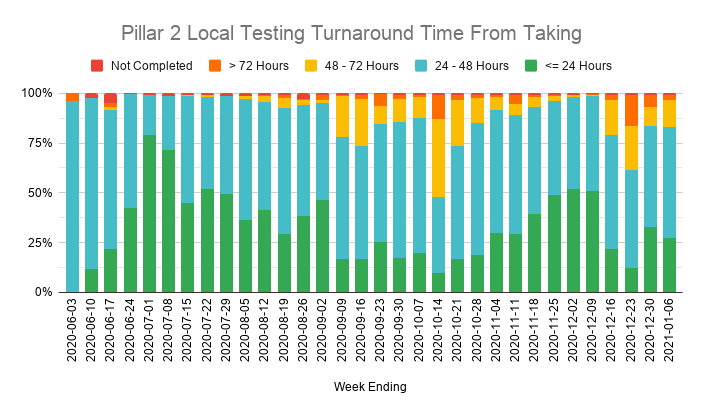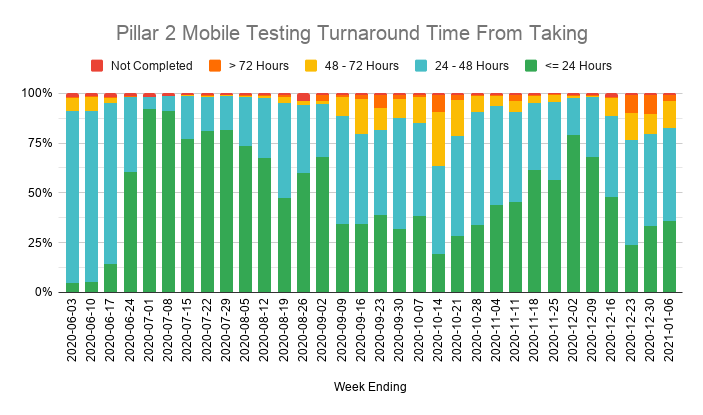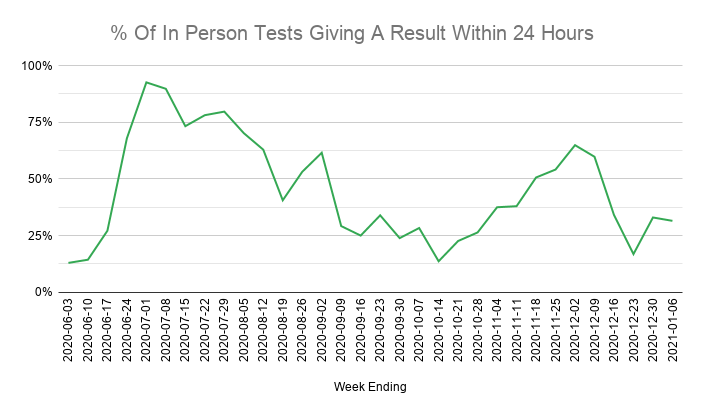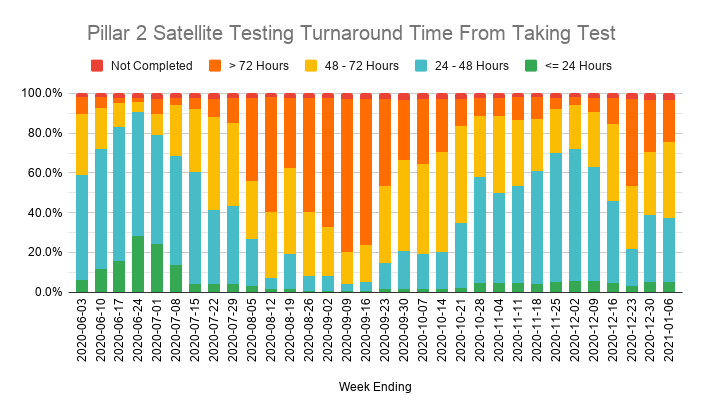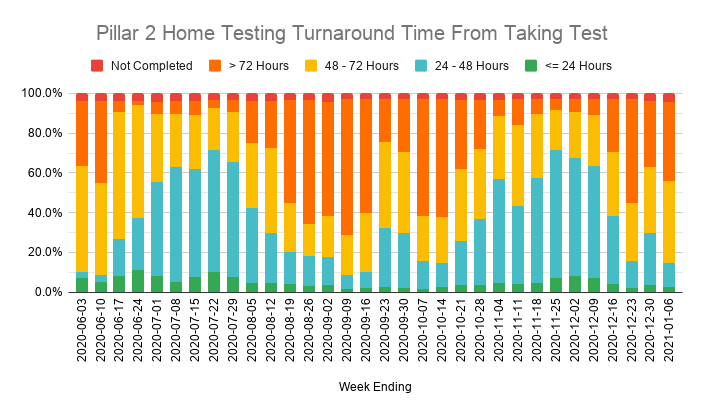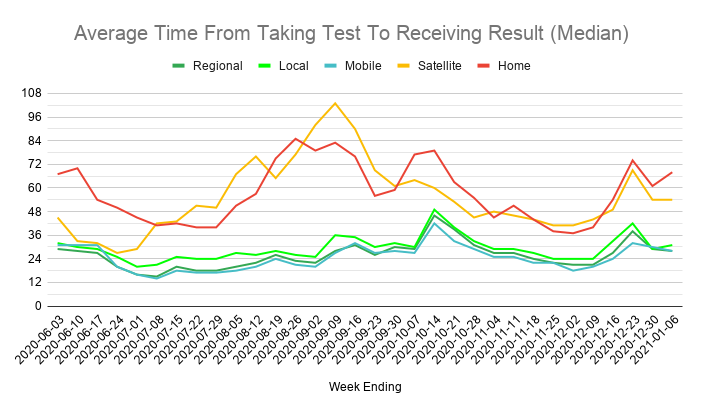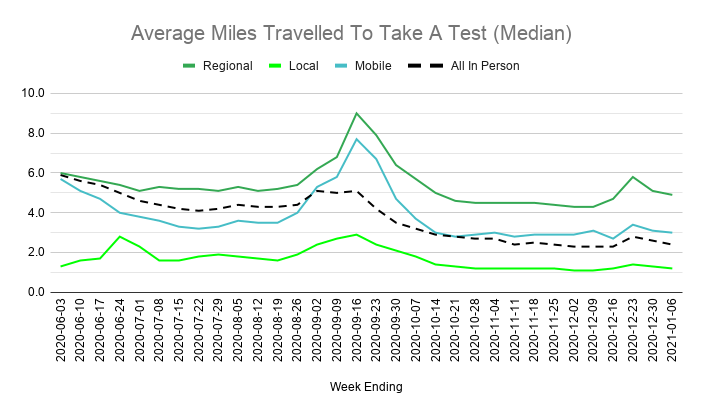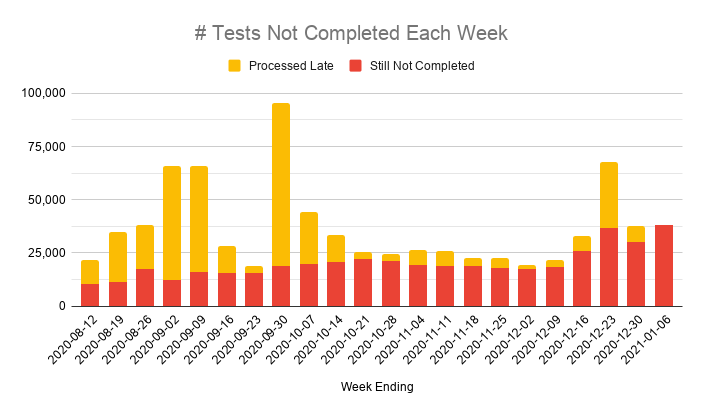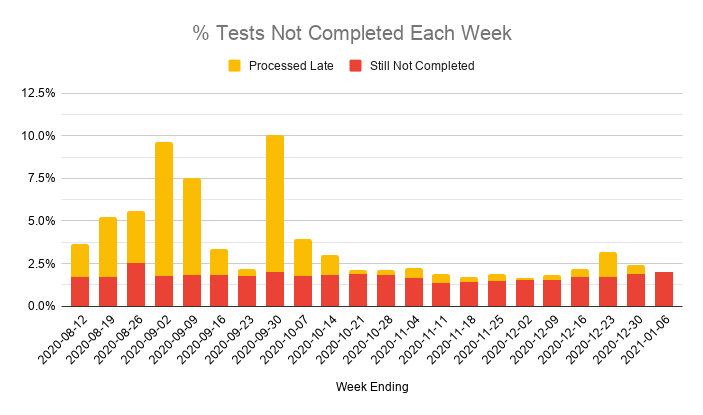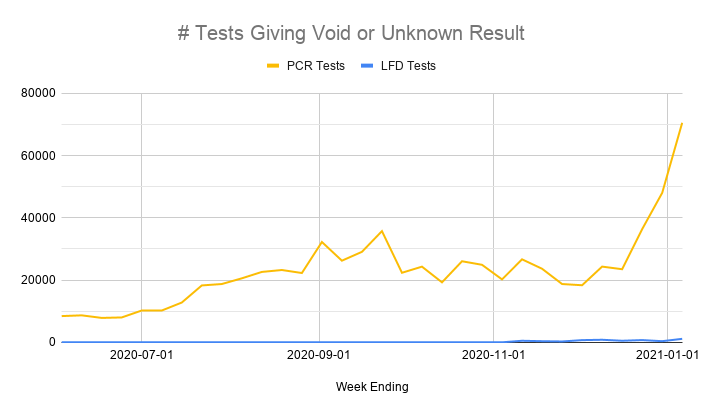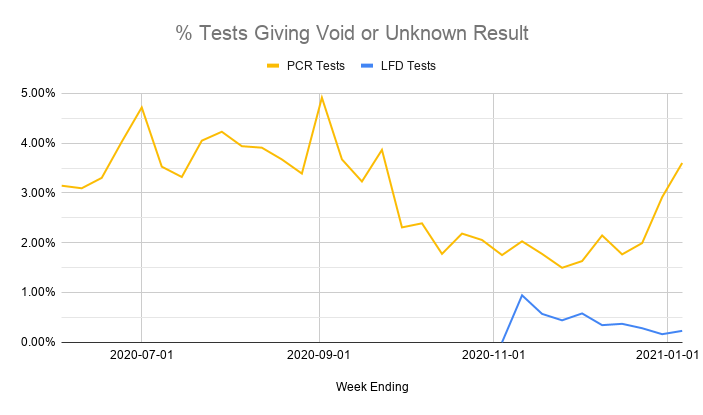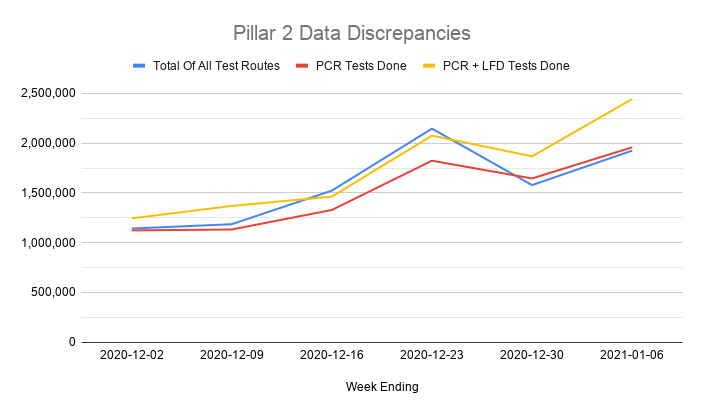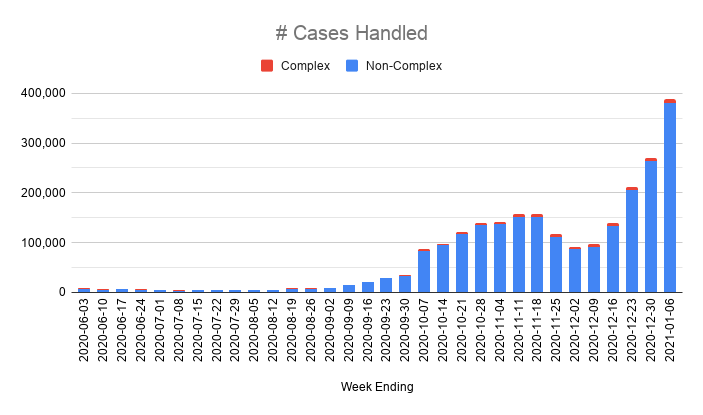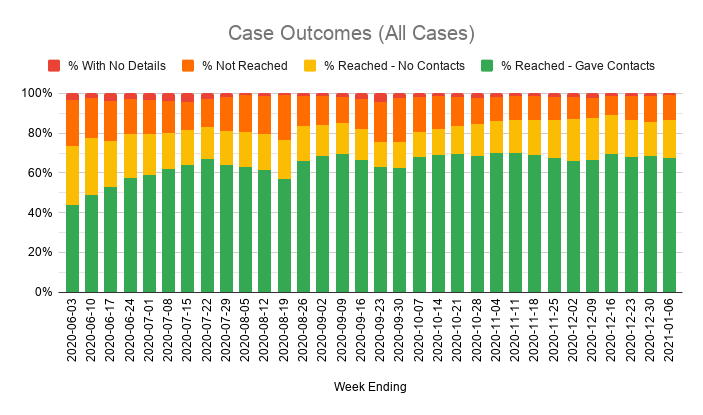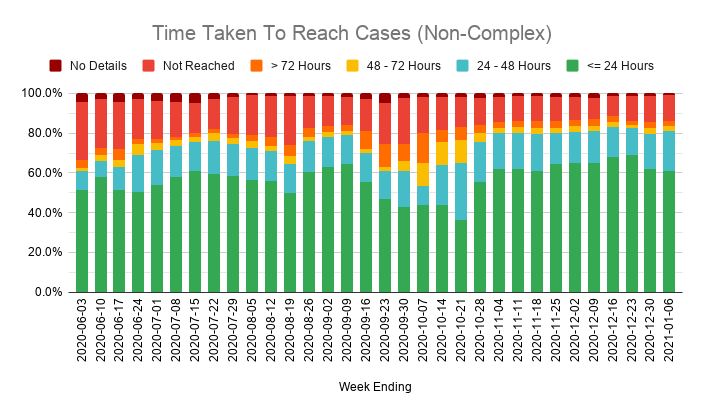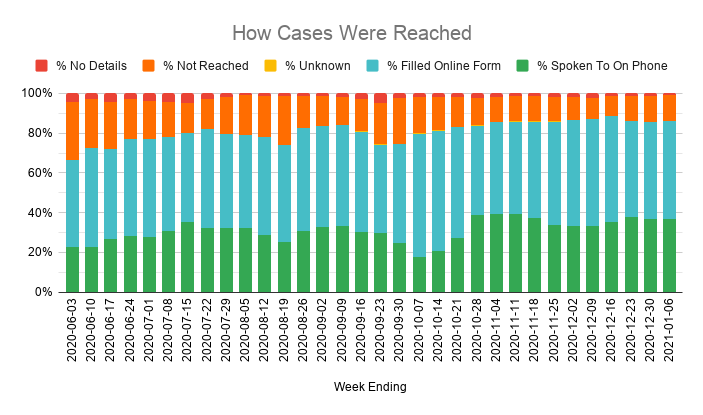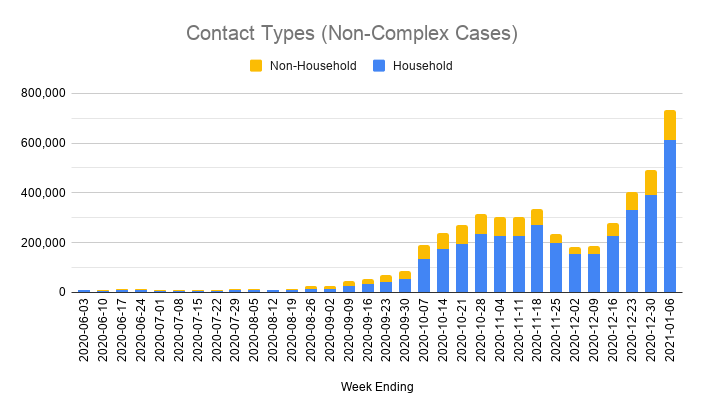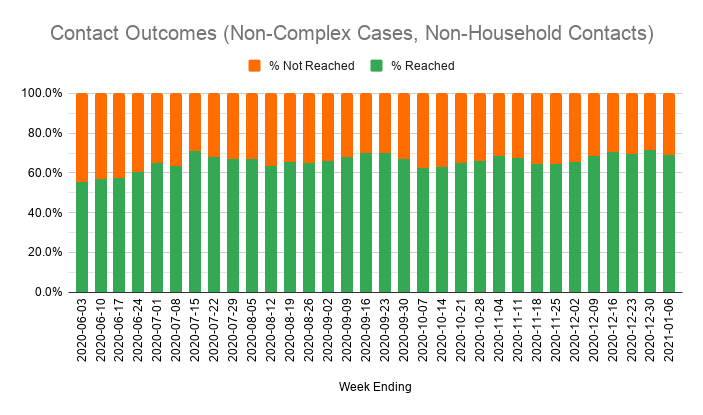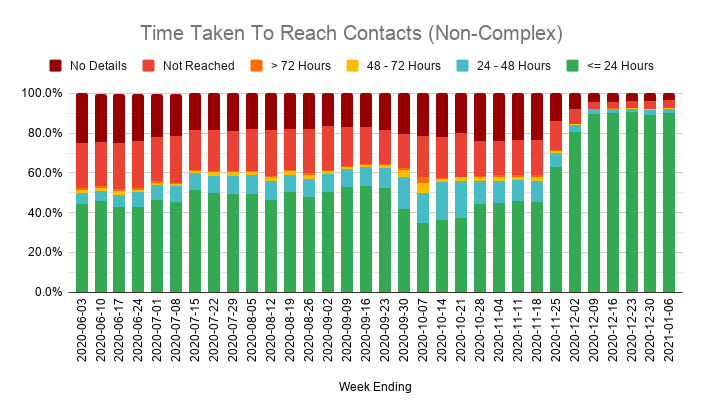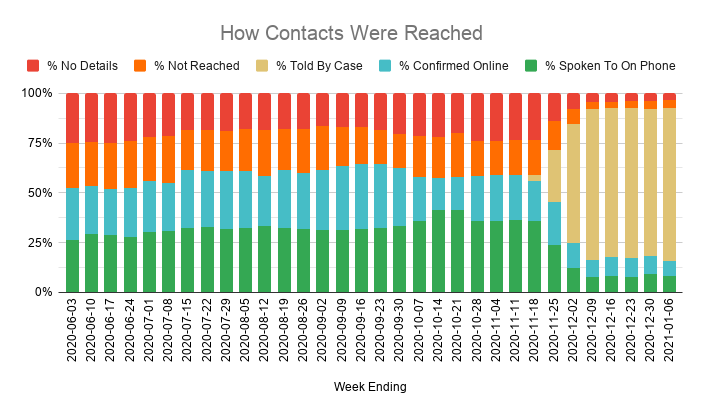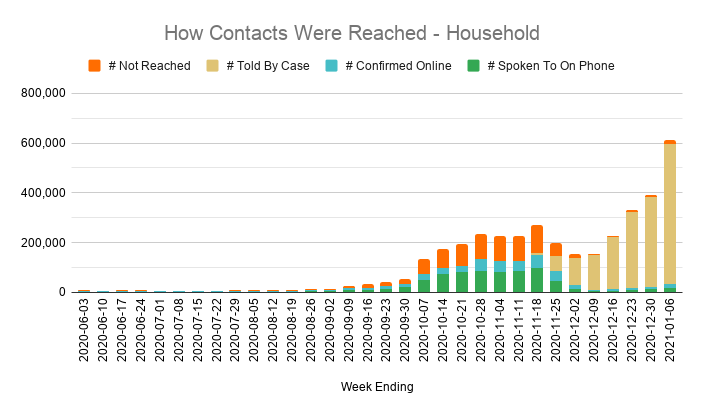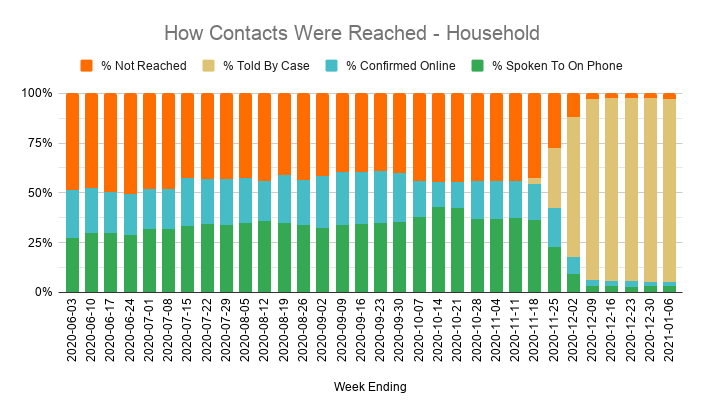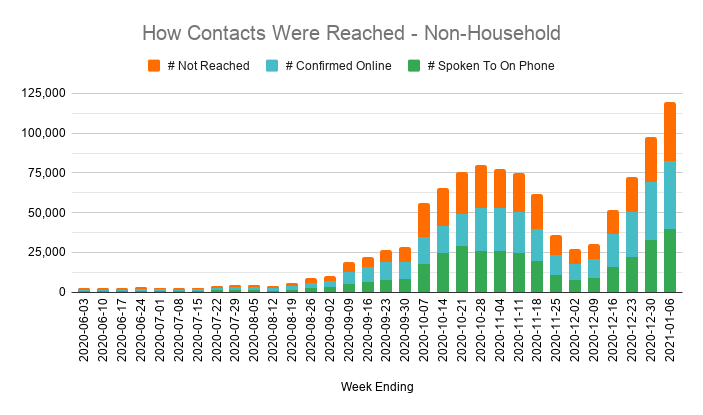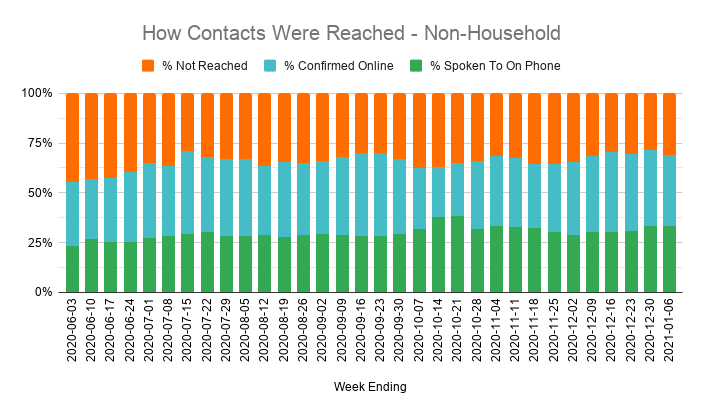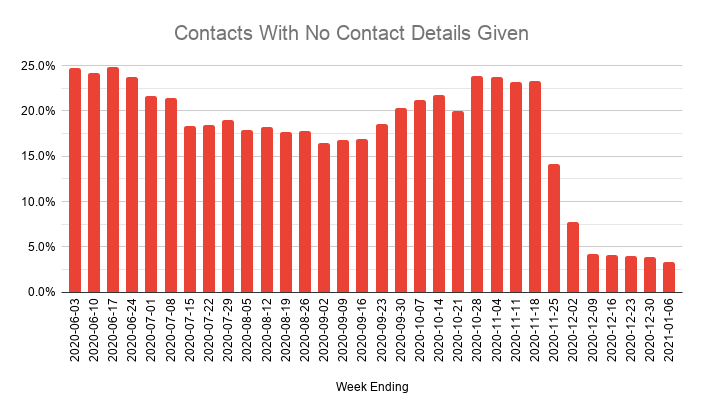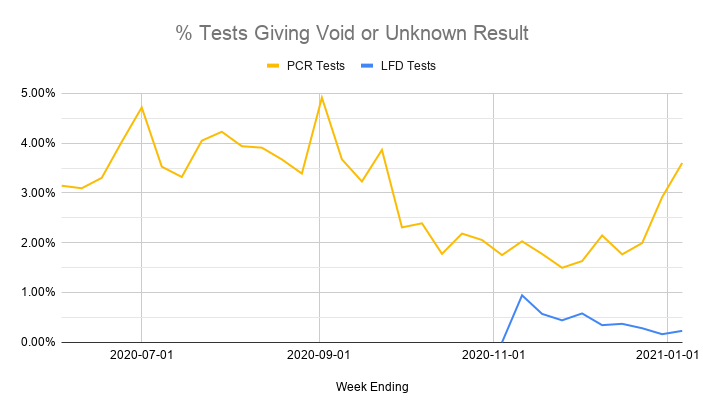This week's Test & Trace report covers the first week of January, when the number of people testing positive was rising rapidly.
There are still delays in getting test results, and it looks like a lot of delayed cases from over the holidays were referred to contact tracers.
There are still delays in getting test results, and it looks like a lot of delayed cases from over the holidays were referred to contact tracers.
The number of people getting tested bounced back after a dip over the holidays, and there's been a big surge in use of Lateral Flow Tests (which are only used to screen asymptomatic people).
So although the number of people testing positive went up, positivity dropped slightly.
So although the number of people testing positive went up, positivity dropped slightly.
Pillar 2 testing data shows a different picture, with positivity going up.
This is based on tests rather than people tested though, which may explain the discrepancy.
For example, anyone testing positive with an LFT should be re-tested with PCR. Two +ve tests, one +ve person.
This is based on tests rather than people tested though, which may explain the discrepancy.
For example, anyone testing positive with an LFT should be re-tested with PCR. Two +ve tests, one +ve person.
With demand for tests rising again, turnaround times are still much longer than normal. Only 32% of people tested "in person" got a result within 24 hours.
This seems to be down to longer waits for results from local (walk in) sites, which now make up 40% of all in person tests.
This seems to be down to longer waits for results from local (walk in) sites, which now make up 40% of all in person tests.
Turnaround times for Home test kits also got worse. Only about 16% gave a result within 48 hours.
Overall, things aren't as bad as they were in September, when lab capacity was overwhelmed and test availability rationed. But any delay has a knock-on effect for contact tracing.
Overall, things aren't as bad as they were in September, when lab capacity was overwhelmed and test availability rationed. But any delay has a knock-on effect for contact tracing.
One area for concern though is that there's been a sharp rise recently in the percentage of tests reported void (due to leaking or damaged samples, lab errors or other issues) or not giving a clear result.
There's no explanation as to what's happening. Any idea, @alanmcn1?
There's no explanation as to what's happening. Any idea, @alanmcn1?
Meanwhile something odd happened to the Pillar 2 data in December.
If you add up the number of tests done in all of the test routes (home, regional etc) it usually matches the number of PCR tests done.
But for 2 weeks it seems to match the TOTAL number of tests, including LFTs.
If you add up the number of tests done in all of the test routes (home, regional etc) it usually matches the number of PCR tests done.
But for 2 weeks it seems to match the TOTAL number of tests, including LFTs.
I've not seen any explanation for this, and turnaround times for all test routes were actually *worse* in those two weeks (even though LFTs should give a result within a few hours).
I've emailed @DHSCgovuk to notify them, in case it's an error. We'll see if I get any reply...
I've emailed @DHSCgovuk to notify them, in case it's an error. We'll see if I get any reply...
Meanwhile the number of cases referred to contact tracers went up faster than the number of people testing positive, which suggests delays in referral over the holidays.
And when they were referred, only 61% were reached within 24 hours, down slightly from 69% before Christmas.
And when they were referred, only 61% were reached within 24 hours, down slightly from 69% before Christmas.
And the number of close contacts identified obviously also rose sharply.
Most are reached within 24 hours, but that's because most are members of the person's own household, and instantly count as reached when the person who tested positive agrees to tell them to self-isolate.
Most are reached within 24 hours, but that's because most are members of the person's own household, and instantly count as reached when the person who tested positive agrees to tell them to self-isolate.
The impact this change in procedure had is clearer to see now, as new data has been released breaking down how people were reached by whether they were household or non-household contacts.
Performance for non-household contacts is much the same now as it was in the summer.
Performance for non-household contacts is much the same now as it was in the summer.
This also reinforces what I've highlighted before, which is that a lot of contacts that weren't reached before were members of the person's own household!
The same seems to be true for people they didn't give any contact details for. This dropped sharply when procedures changed.
The same seems to be true for people they didn't give any contact details for. This dropped sharply when procedures changed.
All of which suggests the contact tracing system maybe wasn't as bad as we thought. They were just wasting a lot of time trying to identify and talk to individual members of a case's own household.
The concern as ever though is whether contacts are self-isolating when told to.
The concern as ever though is whether contacts are self-isolating when told to.
You can have the best testing and contact tracing system in the world, but it won't do you any good if you don't properly support and enforce self-isolation for people who may be infected.
If people can't afford to stay at home when they need to, the whole system falls apart.
If people can't afford to stay at home when they need to, the whole system falls apart.
This week's Test & Trace report and accompanying data can be found here. https://www.gov.uk/government/publications/nhs-test-and-trace-england-statistics-31-december-2020-to-6-january-2021
And here's my analysis of last week's report (including the major revisions made to the testing data a few hours after it was released). https://twitter.com/_johnbye/status/1347323424977395713?s=20
UPDATE: Thanks to someone working for one of the firms operating Pillar 2 test sites, who informs me that there has been a change in the test kits being used recently.
This might at least partly explain the sudden increase in the number of tests being voided.
This might at least partly explain the sudden increase in the number of tests being voided.
In early batches of the new kit the lid of the vial wasn't always properly tightened, meaning it was already leaking when it arrived at the test site.
Even now the lid is apparently harder to screw on than with the old kits, which may be causing more leaking samples.
Even now the lid is apparently harder to screw on than with the old kits, which may be causing more leaking samples.
If so, it wouldn't be the first time this has happened.
Randox told Channel 4 that one type of test kit they were sent for processing leaked far more often than others.
They raised the issue in August with Test & Trace, who later switched manufacturers.
https://www.channel4.com/press/news/dispatches-uncovers-serious-failings-one-uks-largest-covid-testing-labs
Randox told Channel 4 that one type of test kit they were sent for processing leaked far more often than others.
They raised the issue in August with Test & Trace, who later switched manufacturers.
https://www.channel4.com/press/news/dispatches-uncovers-serious-failings-one-uks-largest-covid-testing-labs

 Read on Twitter
Read on Twitter